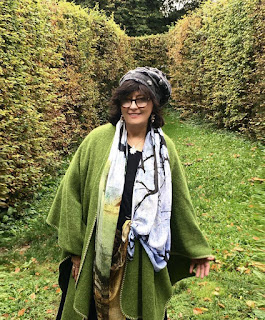While the Irish harvest festival Samhain truly is the root of Halloween, it never was celebrated on October 31st.
The ancient Celtic year was divided by the four seasons and reckoned by a fluctuating lunar calendar. The full moon that rose midway between the Autumnal Equinox and Winter Solstice was called Samhain. It was the most scary and sacred time of all.
Winter was approaching, crops were dying, days were growing shorter, and the specter of death hung heavy in the air. Cattle were slaughtered and salted to feed the people through winter. Crops were gathered in and stored lest the shape-shifting Pooka, a nocturnal hobgoblin that delights in tormenting mortals, destroy the fruits of the field and bring on a season of famine. With storehouses full, the Celts marked the 3-day full moon period with revelry and ritual before facing the unknown.
Consumed with fear that they might be carted away to the land of the dead, the Irish lit huge bonfires lit to ward off evil forces. On Samhain the veil between this and the Otherworld was thin. The fairies roamed at will, the mounds marking the entries to their dwelling places glowed with eerie light, and many a mortal disappeared, lured to live forever below ground with the fairies.
It was Feile Na Marbh, Feast of the Dead. Children born that night were believed to be blessed with ‘double sight’, able to see and play with the fairies. Spirits appeared to ordinary folk advising them of future events. Long dead ancestors sought the warmth of a hearth fire and communion with the living. In every window, flickering candles lit the way for lost souls.
In 432AD Saint Patrick brought Christianity to Ireland, but the old ways persisted. Rome attempted to take the easy way out and absorbed the tradition into its own calendar. For centuries, the Church had honored its martyrs and saints on May 13, so in 844AD Pope Gregory IV transferred the saints’ feast to November 1, renaming it All Hallows Day.
Five hundred years later, Celtic descendants were still celebrating their 3-day full moon Feast of the Dead. In the 14th century, Rome decreed November 2 would be known as All Souls Day and masses would be said for the departed who had not yet been admitted to heaven. Hoping to finally eradicate the ancient festival, October 31 was titled All Hallows Eve and installed on the Church calendar as a vigil of preparation for the 2-day religious observance.
Christianity had absorbed Samhain, but the Celtic ceremony of honoring the dead – now artificially fixed on October 31st and November 1st and 2nd instead of the final harvest full moon – remained. It was still an occasion for feasting and revelry. It was still the night when souls roved free. And it was still the time to seek answers on things unknown.
Have a safe and happy Halloween.
An excerpt from Hallowgreen: The Celtic Roots of Halloween (Irish America Magazine Oct/Nov 2011)




























































